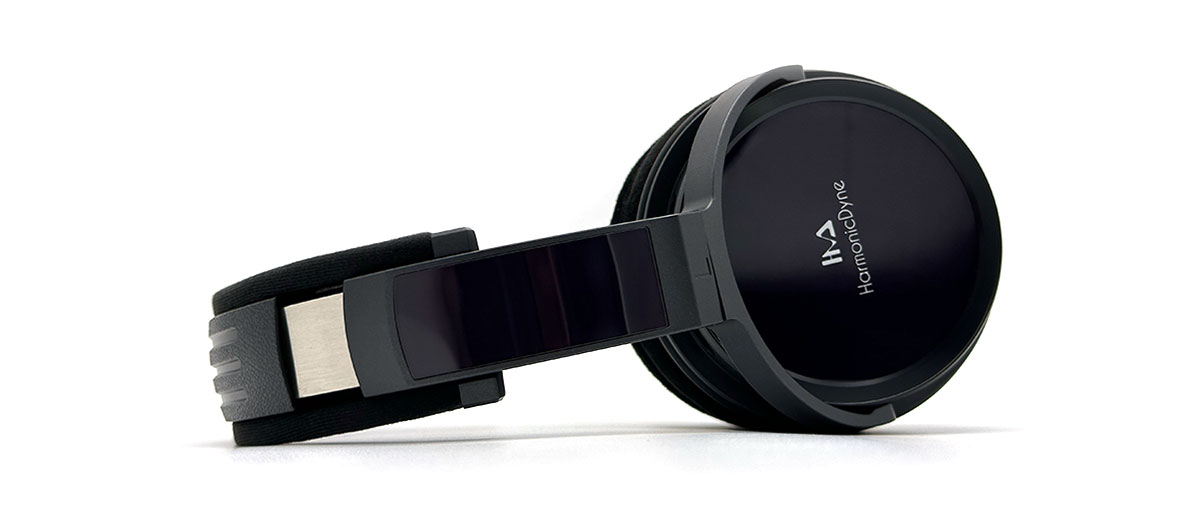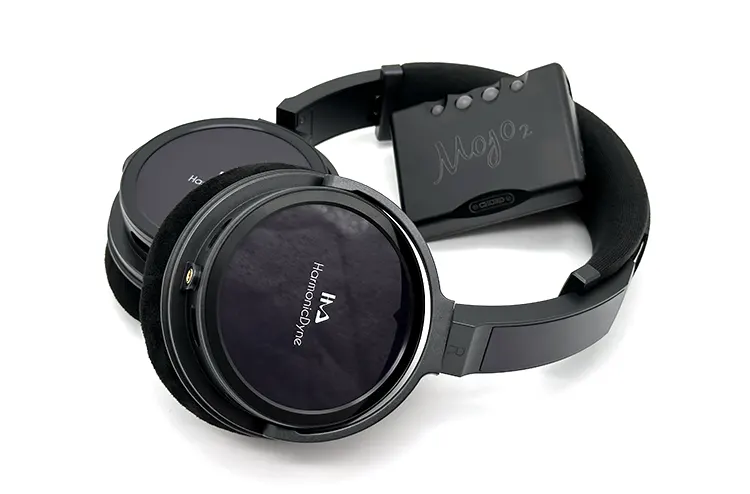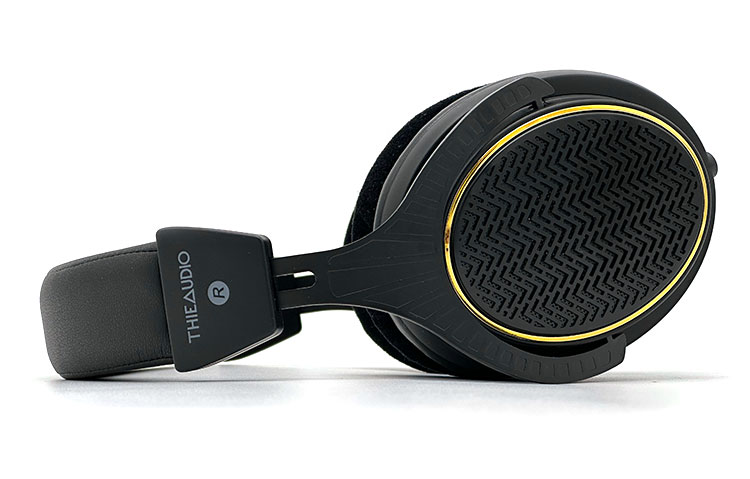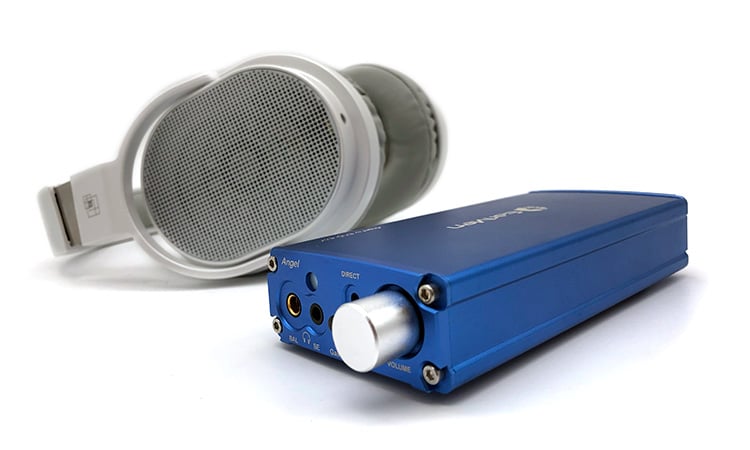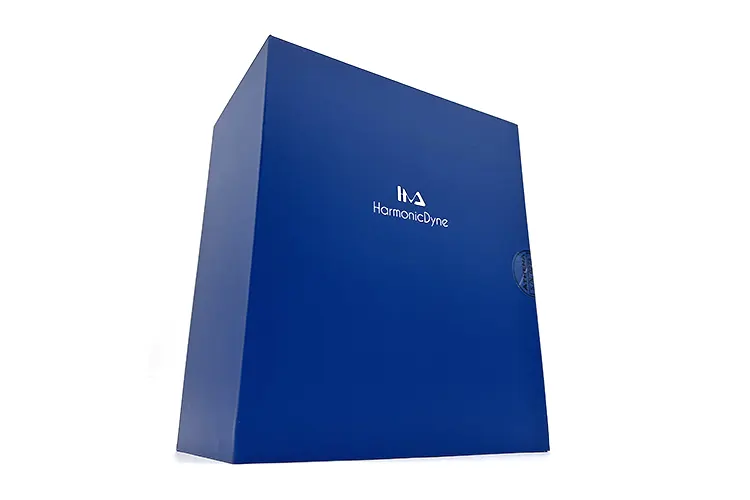Synergy
Efficiency
Closed-back headphones usually don’t take as much effort to get loud since they isolate much better than open sets. Negotiating this thin line, the Athena has gazing punched holes in the perimeter of the cups but it still leans closer to how a closed-back headphone performs.
Supporting the ease of use is the quite efficient 34Ω impedance rating of the Athena. Both the 1.85W capable EarMen ST-Amp and the pocket-sized Chord Electronics Mojo 2 drove the Athena well.
The Mojo 2 crossed the halfway line a few times but the ST-Amp stayed comfortably around the quarter region.
Pairings
Initially using my Burson Conductor 3 Reference to form some impressions, the Athena added scale and width to the otherwise thin and raw sound of the amplifier. One of the important advantages of this pairing is the reduced shout which I think makes C3R a more relaxed experience than usual.
Moving onto the ST-Amp, the Athena received a broader and more dispersed quality to its stringed composition. Not as fluent in micro details as the Burson, the ST-Amp pairing instead offered more presence up top adding welcome forwardness to electric guitars if preferred.
The general soundstage didn’t change much. If there’s anything I’m noticing with the ST-Amp is the brawnier thump of drums and beats.
Listening through the Mojo 2 is also a great experience. It works well with the vocal timbre of the Athena transferring to the strings for a flowy vibe. The detail here is enough to not appear too rounded.
The Mojo 2 however is not emphasizing broad strokes so the reverb is more reserved than the ST-Amp. It does, however, add a more emotive vibe to violins that generate more ‘room information’ in the process.
Select Comparisons
Thieaudio Ghost
$129
Technical
With a humbler sized 40mm driver, the Ghost is an open-back set also using a mix of metal and ceramic in its diaphragm assembly. The official frequency range may be less at 20Hz-20kHz but Thieaudio still came up with a design that has a driver reflex and internal damping factor better than nickel-plated ones.
Both are reaching to match the human ear’s pinna gain. Helping on this challenge for the Athena are the M-shaped vents around its earcups while the Ghost is implementing a redesigned acoustic cavity to adjust pressure across the driver membrane.
Design
The Athena in being a part of a mature series has a stronger likeness to its peers, unlike the Ghost which is a fresh start for Thieaudio for full-sized dynamics. Experimenting more, the Ghost appears with a mix of Sennheiser and Shure in its design.
Both are quite comfortable to wear but the Ghost has a slimmer headband wrapped in suppler foam. The Athena on the other hand has a firmer feel covering more surface area in return.
Adjusting to the right fit, the extension mechanism of the Athena bites into place while the Ghost simply slides. And in practice, the Athena is more confident to use. This is also because it offers more freedom when moving the yokes into position.
Performance
The Athena has more weight in its presentation over the leaner appeal of the Ghost. I, however, still get tidier notes with the Athena as I find that it offers a more mature sound and isolates instruments much better.
With a less hindered upper-mid presence, the Ghost was given a more energetic spark for vocals bringing out the passion of a dramatic singer. But even without the extra bump, the Athena pulls away with a delicately airy production completing the picture better.
Going back and forth, the detail is there for the Ghost but it lacks the control to show the minutiae of a vibrato as much as the Athena. Even with its thicker timbre, the Athena doesn’t let it overshadow the important parts of the song.
The Ghost doesn’t increase the size of instruments as much as the Athena but the latter still excels in maintaining accuracy in directionality even with its grander sound. Also, the ghost may reach farther at times given its open nature but the staging width stays more or less the same.
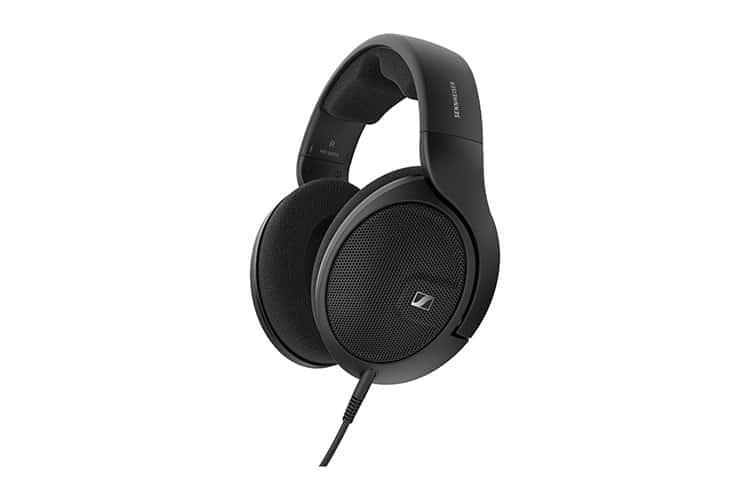
Sennheiser HD560s
$199
Technical
The 120Ω transducers of the HD560s are made with an all-new polymer blend that’s vastly different from the metal and ceramic choice of HarmonicDyne.
While less efficient, Sennheiser successfully managed to reproduce deeper notes down to 6Hz through the HD560s. Tackling the dexterity of the bass region is an important point for the HD560s since it wants to reproduce not only an accurate reference sound but also to provide a solution to low-end extension.
It isn’t unusual for loudspeaker enthusiasts to tow in their setups for an optimum listening position. Bringing the same concept to headphones, Sennheiser angled the drivers of the HD560s. The Athena on the other hand maintains a more direct and linear positioning for its drivers.
Design
Both designs have a lot of plastic, but the HD560s is less enthusiastic about making itself stand out. The Athena adds a reflective glass in its face plate and its rods giving it a more standout presentation.
In keeping a more conventional chassis, the HD560s is lighter at 240g. It however extends the simpler inspiration to the headband seeing that the foam is glued, unlike the more complex assembly on the Athena.
The Athena may have a flat driver but the earpads having enough depth and room makes it possible to wear it with no issues. How the HD560s addresses this is in offering more space inside the earcups coming from the gap left towards the rear by the angled drivers.
Performance
The two devices can’t be more different hearing the refreshingly wide and open sound of the HD560s. Those looking for stage width and flat tuning won’t go wrong with the Sennheiser.
It is very easy to be disappointed however with the lack of bass presence in the HD560s at least when compared to the more gripping weight of the Athena. What the HD560s suggests instead is to tighten up huge wallops for fewer instances of potential blurring with neighbors.
Continuing with a blacker background, the HD560s vividly throws each note with a temperate timbre. Guitars on the Athena are not as rigid sounding and have a sweeter tone lingering a bit longer than the HD560s.
The HD560 has more adeptness in pulling up the edges on whispery areas. The use of a breathable grill also definitely helps in making the soundstage appear more natural and airier.
Friendlier-sounding horns will come out of the Athena. Climbing to the upper treble though shows it can also be brassy and not just weak.
Moondrop Void
$199
Technical
It isn’t directly implied for the Athena but Moondrop self-developed their 50mm dynamic driver for the Void through FEA, (Finite Element Analysis), software.
The Void’s internal magnetic circuit has one tesla in magnetic flux density. And with a metal-coated dome instead of a blend of metal and ceramic, Moondrop focused on performance by utilizing a flexible damping suspension ring.
Both devices are pretty much usable in a portable environment. The Void however may require a little bit more juice at 64Ω with 110dB sensitivity.
Design
While the Athena is iterating on the design of its brothers, the Void is using new proprietary molds to let them fashion the parts they want. It however didn’t make the Void more special since Moondrop’s entry looks less sophisticated even though the material they used has a soft brilliance to elevate its style.
The metal extension rods on both units have tactile feedback. Likening the two, the Void has a subtler bite while the Athena is quite louder.
The Void falls short in the amount of padding in the earpads and headband. The Athena can also lay flat plus its yokes are more agile and less rigid.
Performance
Both know how to not be too serious with low-end arrangements but the Void lets more air into the mix and is not as voluminous sounding. The Void also has an easier time with deep notes that are getting skirted off on the Athena.
With an acoustic song to see how both manage a cleaner song, the Void is the one that sprinkled more texture for added depth. The Athena performed quite well as well but it is more motivated to show its talent in tonal balance and scale.
Changing pace, the Athena is the one that surprised me with its accuracy with electric guitars. Comparing it with the Void, it was the more flexible headphone in picking up sudden bursts and changes in melody. And I also get crisper cymbals here with more agile extensions.
A vibrant clapping audience though sounded more realistic on the Void. I’ll give the cohesiveness of image placement to the Athena still since it is utilizing the central zone much more evenly.
Our Verdict
I’m amazed at how much HarmonicDyne has evolved with the Athena. A semi-closed design that packs a lot of value, the solid build and easily likable tuning give it an interesting proposition.
My take on the vents is that they were successful in doing their job. This is a closed-back sound that lets images be accurately placed while the low-end doesn’t feel cramped and the staging can also breathe.
HarmonicDyne Athena Technical Specifications
- Drivers: 50mm Dynamic Driver
- Acoustic Architecture: Semi-closed
- Impedance: 34Ω@1KHz
- Sensitivity: 116.5dB/Vrms@1KHz
- Response: 10-70KHz (Free Field)
- THD: 0.2%@1KHz 100dB SPL
- Cable Termination: 3.5mm Stereo Cable
- Headphone Connector: Dual 3.5mm
- Ear-Pads: Suede Fabric
- Dimensions: 210*175*105(mm)
- Weight: 320g

